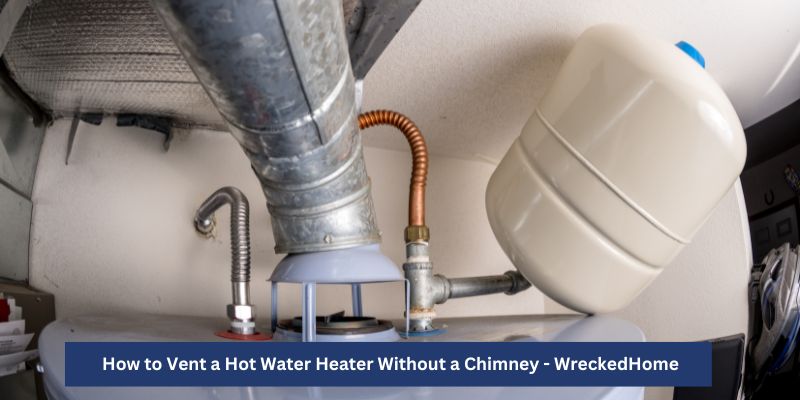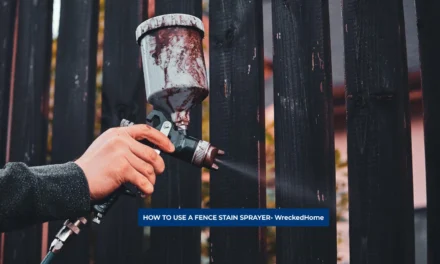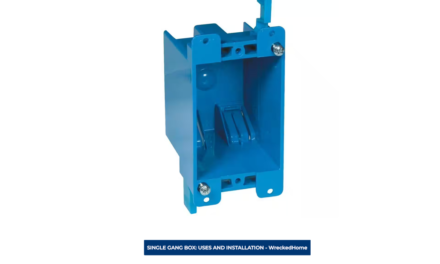A lot of people don’t have chimneys in their homes. So, they don’t know how to vent a hot water heater without a chimney.
If we don’t properly ventilate water heaters on a regular basis, we can face dire consequences. This includes a massive fire and death in the house.
So, it is crucial to ventilate your water heater. That’s why the expert team of Wrecked Homes decided to discuss different methods to ventilate your water heater without a chimney.
We are going to discuss eight different methods for how to vent a hot water heater without a chimney. So, keep reading to know about them.
8 Methods: How to Vent a Hot Water Heater Without a Chimney

1. Install Attic fan:
Installing an attic fan is the easiest method to learn how to vent a hot water heater without a chimney. It works like a chimney and requires very little effort from your side.
The best part of this method is it is easily available. You can get it from any home improvement shop near your home. Or, you can buy it from Amazon. It is a bit of an expensive method, but you should give it a try.
The fan will take out the humidity and hot air of the heater from your house, keeping it cool.
2. Power Vent:
Power ventilation is also a popular method to learning how to vent a hot water heater without a chimney. In this method, you will install a fan near your heater in the wall. It will blow fresh and cool air from outside in your heater.
You need to supply electricity and natural gas to this fan. Also, you must install it on a flat surface such as walls. With it, make sure that airflow is great in that area.
But, this method to vent a water heater has some drawbacks too. The first one is you need a lot of space to install the fan. The space will depend on your heater.
For example, you will need at least 32 inches of space to install this fan if your heater is 30 inches wide.
Another drawback is also related to the area. You need an area near your water heater to install this program. Because you need to attach the fan with your water heater. For it, follow the manufacturer’s guidelines.
This whole method is a bit difficult and requires a lot of calculations. But, it will do proper ventilation of your heater. So, this whole effort is worth it.
3. Roof Vent:
If you find the previous method tricky, go for the roof ventilation method. This method is as convenient as installing an attic fan. it is a practical method in learning how to vent a hot water heater without a chimney.
A lot of people prefer this method over attic fans because it doesn’t require any electricity. This fan will work on natural airflow only.
In this method, hot air from the heater will rise toward the roof. And, this fan will take it out from the home. It works exactly like the chimney, and it doesn’t have any installation issues.
You need to follow the instructions of the manufacturer to install it in your house.
4. Installing PVC pipes:
This fourth method is the most convenient one. In it, you don’t need to invest any time or energy as it is a simple and easy method.
You just need a PVC pipe, elbow, and coupler. With it, you also need tools for drilling, cutting, and screwing the pipe into the wall.
So, how do you follow this method to vent a water heater? What you have to do is to install a PVC pipe directly through the wall. It should be at least 6 inches long. Because it should go through the whole wall and then outside of your home.
Now, you can either attach a hose with the end of the pipe to connect with the ground. Or, can attach an elbow to aim it toward the roof.
Though it is an easy method, it has a limitation too. You can’t use it for those water heaters that are less than 18 inches away from your wall because your pipe can’t stand high heat.
If the heater is too close to the wall, the pipe will create toxic fumes. It can be hazardous so avoid it at every cost.
5. Ducting:
If you are not comfortable with PVC pipes, you can go for the ducting method. It is convenient and works just like PVC pipes. In fact, it is one of the best methods for how to vent a how water heater without a chimney.
In it, you just have to buy a ducting kit. And, cut a hole in the wall near your water heater. After that, slide the ducting through the hole, and out the end cap. You can aim the end cap toward any wall or roof. It will be your choice.
6. Exhaust Fan:
If you have a tankless hot water heater, this method will be ideal for you. We recommend you learn this method on how to vent a hot water heater without a chimney. This is because it is easy to install and cost-effective.
They are similar to kitchen or bathroom exhaust fans. In this method, you just have to put the exhaust fan near the bottom of the water heater.
Then, install a makeshift pipe and drill a hole in the wall so that the hot air comes out from the hole.
That’s it! You have proper ventilation now through the exhaust fan.
7. Use an Air Conditioner:
Another simple method to vent a water heater is to use an air conditioner. For it, you need a window or an AC. Make sure that the AC you buy has the setting of warm air circulation. If it doesn’t, that air conditioner is useless for this method.
In this process, open a window and close all other doors and windows of your house. If you do not do it, the hot air will keep circulating in your house.
So, choose the window near your heater. Open it, and set the air conditioner to circulate warm air. That’s it! Your house is now free from warm air.
8. Stove Hood:
This is also an effective method, but we recommend you consider it as your last option. It can be a decent replacement to your chimney but it is not a very convenient method.
Well, you can use your stove hood in two different ways.
One is to install it directly above your water heater and connect both of them. It will work like a chimney and will take out whole warm air through it. This process is called a freestanding ventilation system.
The second method is to connect the hot water exhaust to the existing vent system. For it, you don’t need to install anything new at your home.
But, we will recommend you go through your local building codes and gas company instructions before going to this method.
So, these are eight different methods on how to vent your hot water heater without a chimney. Now, a lot of you must be confused about which method they should go for. Obviously, you all need only one method to vent your home. So, which one should be ideal?
How to Choose an Appropriate Method to Vent a Water Heater?
Well, it is pretty easy. Ask yourself the following questions before choosing a method on how to vent a hot water heater without a chimney :
- How much budget do you have?
- How much time can you spend on it?
- What type of heater do you have?
- What do your local building codes say? Which method do they allow?
- What type of weather do you have?
- How much space do you have?
Every method we discuss has its limitations and positive points. For example, an exhaust fan is the most cost-effective method. The ducting method can take a bit more of your time than other methods.
Also, the power vent is suitable for gas water heaters but it takes up a lot of your space.
If the weather in your area is drastic or unusual from time to time, you should consider this aspect too. A lot of methods work in every weather but a few don’t. So, make sure to do your whole homework before choosing any ventilating method.
Now, a lot of you may want to know why ventilation is important. Why do you have to go through this whole process in the first place? So, let’s see the answer.
Visit our store for 10% off our Home Maintenance products here.
Why is it Important to Learn How to Vent a Hot Water Heater without a Chimney?
There are various reasons why it is important to learn how to vent a hot water heater without a chimney. We have told you in the beginning that various accidents can happen if you don’t properly vent your water heater. You can face different types of issues if you do not do it. Some common ones are:
- The water heater can catch fire.
- Your house can burn down if the heater catches fire.
- Carbon monoxide comes out of the water heater. If you do not ventilate it properly, this poisonous gas can enter your body. And, it can kill you or any of your loved ones.
- It can cause structural damage to your home too. The gasses will become extremely hot and will settle down in every nook of the house. These can damage the building material. So, your house will decay before time.
- You will get less hot water. It will eventually lead to high energy bills.
- Improper ventilation can take a toll on the heating system. So, it can affect the efficiency of your water heater.
Conclusion- How to Vent a Hot Water Heater Without a Chimney
To conclude this whole conversation, we just want to say that there are different ways of learning how to vent a hot water heater without a chimney.
So, if you don’t have a chimney, don’t neglect the ventilation. Choose any method from the article and apply it in your home.
We hope that you will be able to find an appropriate method for your house, and will keep yourself and your family safe.
For any repairs, installations, builds, or questions; We recommend you to hire a professional. Find A Pro Near You Here!





































